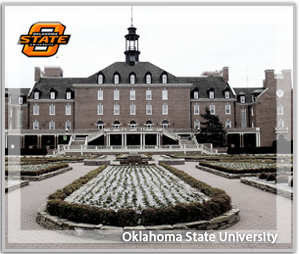Moving to Oklahoma City, OK
Oklahoma City is one of America’s fastest-growing, fastest-developing, and fastest-culturalizing areas in the U.S. Only in existence since 1889, and slow to grow until recently, the city now has a professional basketball team, many great restaurants, and a revitalized, diversifying downtown.
But much which existed in 1950 is still the backbone for OKC. Oklahoma State University sports, Lake Hefner, and the City Zoo are still some of the biggest attractions for residents, and the steadfast agricultural and energy industries fuel the economy.
Layout of Oklahoma City
Oklahoma City is located in the middle of Oklahoma on flat and gently rolling grassland. Its flat topography can get very windy. The City is surrounded by lakes and rivers, yet the over-all area is is semi-arid.
The Oklahoma City metropolitan area includes the large cities of Shawnee and Norman (home to the University of Oklahoma). It is home to over 1.3 million people and is one of the fastest growing metros in the U.S. Oklahoma City itself has a diverse group of neighborhoods, with 23rd St. leading the way for weird, and Midtown and The Paseo for young professionals. Nearby Edmond and Putnam are considered the higher-class satellites of OKC.
Positives of Moving to Oklahoma City
Universities – Oklahoma City University is in Oklahoma City, and the University of Oklahoma is in nearby Norman, giving the area a very educated and opportunity-driven populace and some great health care.
Attractions – The Oklahoma City Thunder basketball team, the botanical gardens, and the city zoo top a list of attractions for residents. Additional, Myriad Gardens near downtown is a new attraction, which will soon be joined by a central park.
Lake Life – There are many lakes and rivers in the area for recreational activity. Even the city’s downtown Bricktown neighborhoodhas a river that residents can use for travel and relaxing, drifting boat rides.
Real Estate – Just like the Sooners of the 1889, you can find plenty of cheap and spacious land in Oklahoma City. Its real estate market is doing well, too, because the city continues to develop and has plenty of room for said development.
Economy – Built on agriculture and energy, OKC’s economy is strong and continues to grow. The nearby universities also provide a boost to the economy, as does the affordable real estate.
Negatives of Moving to Oklahoma City
Weather – Temperatures swing from below 0 in the winter to above 100 in the summer, regularly. When wind-whipped days come rolling across the plains, residents take comfort in the fact that at least it’s not an F4 tornado, which has hit the city many times. And the area is humid to boot.
Sprawl – Oklahoma is one of the largest cities by sheer space in the US. And it has failed to provide any sort of public transit system for that development. Even its bus system is limited and inapplicable to many, making most residents have to drive everywhere. It is ranked as the 41st most walkable U.S. large city, which means it’s pretty much unwalkable.
Conservative – OKC is on the opposite end of the political spectrum from San Francisco. It is a very conservative city, which may be a positive or negative thing, depending on your preferences.
Arts – Smaller musicians often bypass OKC in favor of Texan cities, and, though it has an art museum and outlets for performance arts, it generally does not have a well-recognized artistic scene.
Thinking about moving to OKC? Time to talk to some Oklahoma City moving companies, then. You can find them right here: Oklahoma City movers.



